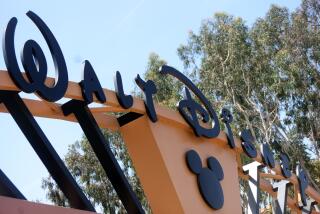McDonnell Will Lay Off Another 4,000 : Aircraft: Commercial division’s work force has already dropped to 19,000 from 53,000, and its continued viability is called into question. But the stock’s price jumps $5.50 a share.
- Share via
McDonnell Douglas Corp. said Friday that it plans to lay off another 4,000 workers at its Long Beach-based commercial aircraft division, renewing questions about the parent company’s commitment to the unit’s survival in the current aviation downturn.
The latest round of cuts is grim news to a work force already decimated by massive layoffs over the last two years. Total employment at the company’s commercial division has dropped from a peak of 53,000 in 1990 to 19,000 today.
Company spokesman John Thom said nearly all of the 4,000 layoffs will come at the company’s Long Beach facility. All the cuts will be in commercial aircraft projects; the 11,000 or so employees working on the C-17 military transport will not be affected.
The company posted a $781-million yearly loss Thursday after a one-time charge, but projections of doubled operating earnings in the coming year--to more than $8 a share--helped push McDonnell’s stock up $5.50 to $62 by the close of trading Friday. However, industry observers said Wall Street’s enthusiasm reflected the prospect of short-term increases in profit and cash flow--not the long-term viability of Douglas Aircraft Co.
Yet analysts are divided on the question of Douglas’ ability to survive the current downturn in orders from the troubled airline industry, which may last into the late 1990s. The company had more cancellations than orders last year, and its vast Long Beach plant--which produced 162 commercial airliners in 1991--will build only 70 to 80 this year.
Douglas has lost market share to competitors Boeing and European-based Airbus Industrie in recent years, and the Long Beach unit has been short on new products. Yet its relentless cost-cutting in the last two years has improved productivity: The division has been profitable for nine consecutive quarters.
The latest round of layoffs appears to signal that the company is willing to slash its payroll as deeply as necessary to retain profitability. What is less certain is how far Douglas can cut before it can no longer effectively compete with Boeing and Airbus.
Wolfgang Demisch, an aerospace analyst at UBS Securities, said Douglas should be able to manage a comeback if it begins to log more orders as late as the second half of 1994. But Loren Thompson, a Georgetown University researcher, concluded in a study late last year that McDonnell will leave the commercial aircraft business by the end of the decade. But Thom said the company fully intends to continue as a major player in commercial aviation. Douglas’ forecast calls for increased production in 1995, as the company’s new MD-90 narrow-bodied aircraft gears up, which should preclude further layoffs.
“We need fewer people because of fewer orders,” Thom said. “We are hopeful we can stabilize at (15,000).”
But the company’s hourly work force, decimated by round after round of layoffs, is less optimistic.
“Just over a year ago, our local union had 21,000 members at McDonnell. Now we have 12,000,” said Floyd Sparks, an official of United Auto Workers Local 148.
“People’s hopes have been dashed again,” Sparks said.
More to Read
Inside the business of entertainment
The Wide Shot brings you news, analysis and insights on everything from streaming wars to production — and what it all means for the future.
You may occasionally receive promotional content from the Los Angeles Times.










